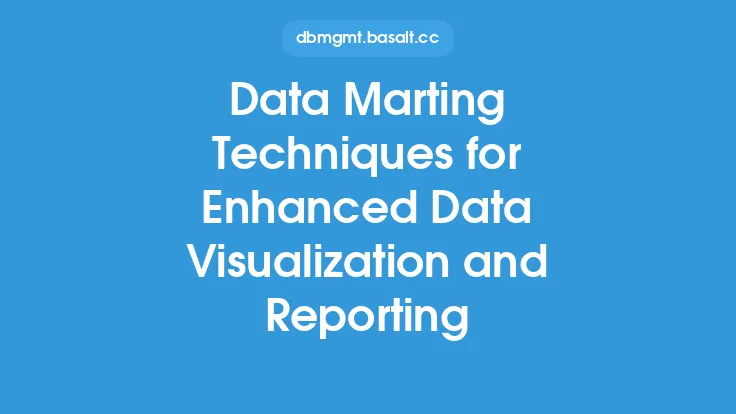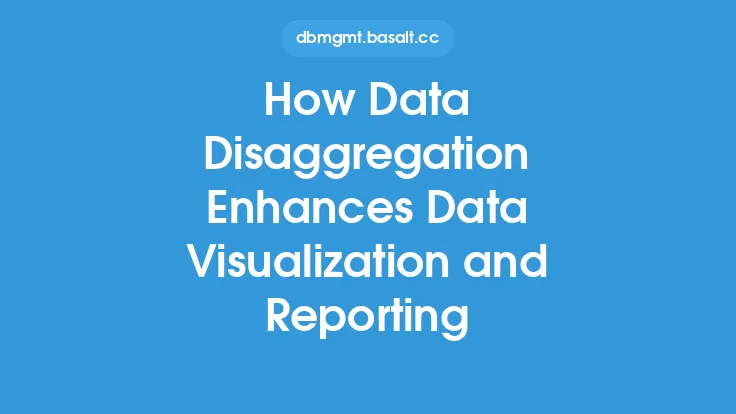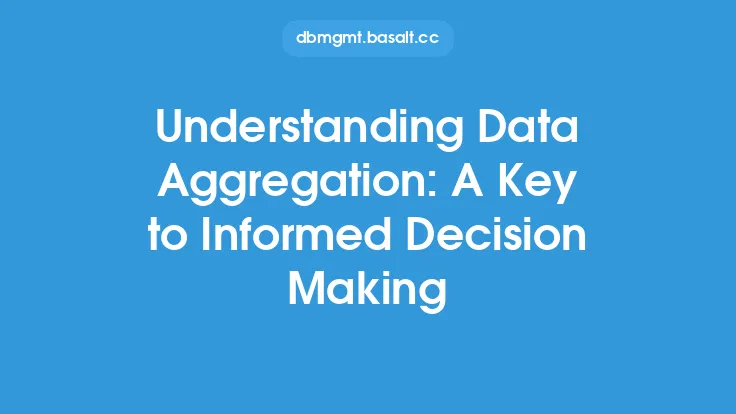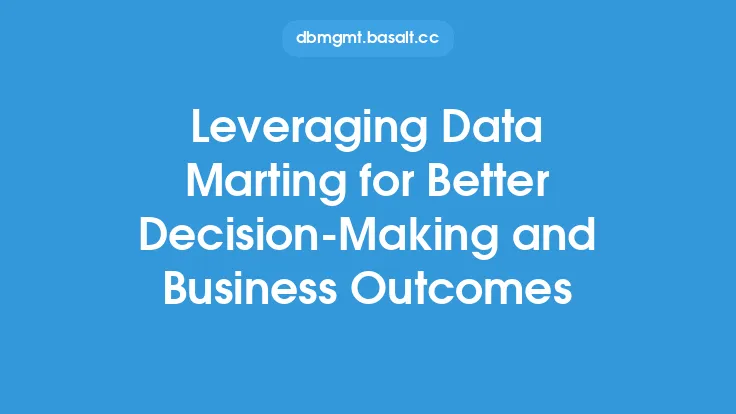Data aggregation is a crucial process in data analysis that involves collecting and combining data from multiple sources into a single, unified view. This process enables organizations to gain a deeper understanding of their data, identify trends and patterns, and make informed decisions. One of the key benefits of data aggregation is its ability to enhance data visualization and reporting. By aggregating data, organizations can create interactive and dynamic visualizations that provide insights into complex data sets, making it easier to communicate findings to stakeholders.
Introduction to Data Aggregation
Data aggregation involves the use of various techniques to combine data from multiple sources, such as databases, spreadsheets, and external data sources. The aggregated data is then processed and transformed into a format that can be easily analyzed and visualized. Data aggregation can be performed using various tools and technologies, including data warehousing, ETL (Extract, Transform, Load) tools, and data aggregation software. The goal of data aggregation is to provide a unified view of the data, enabling organizations to analyze and understand complex data sets.
Benefits of Data Aggregation for Data Visualization
Data aggregation provides several benefits for data visualization, including:
- Improved data quality: Data aggregation helps to eliminate data inconsistencies and errors, providing a more accurate view of the data.
- Enhanced data analysis: Aggregated data can be analyzed using various techniques, such as statistical analysis, data mining, and machine learning, to identify trends and patterns.
- Increased data visibility: Data aggregation provides a unified view of the data, making it easier to visualize and understand complex data sets.
- Better decision-making: By providing a more accurate and comprehensive view of the data, data aggregation enables organizations to make informed decisions.
Data Aggregation Techniques for Data Visualization
There are several data aggregation techniques that can be used to enhance data visualization, including:
- Rollup: This technique involves aggregating data from multiple sources into a single, summary view.
- Cube: This technique involves aggregating data into a multidimensional cube, enabling organizations to analyze data from multiple perspectives.
- Grouping sets: This technique involves aggregating data into groups, enabling organizations to analyze data by different categories.
- Data pivoting: This technique involves rotating data from a row-based format to a column-based format, enabling organizations to analyze data from different perspectives.
Data Visualization Tools for Aggregated Data
There are several data visualization tools that can be used to visualize aggregated data, including:
- Tableau: A data visualization tool that enables organizations to connect to various data sources, aggregate data, and create interactive visualizations.
- Power BI: A business analytics service that enables organizations to aggregate data, create interactive visualizations, and share insights with stakeholders.
- D3.js: A JavaScript library for producing dynamic, interactive data visualizations in web browsers.
- Matplotlib: A Python library for creating static, animated, and interactive visualizations.
Best Practices for Data Aggregation and Visualization
To get the most out of data aggregation and visualization, organizations should follow best practices, including:
- Define clear goals and objectives: Organizations should define what they want to achieve with data aggregation and visualization, and ensure that their goals are aligned with their business objectives.
- Choose the right tools: Organizations should choose data aggregation and visualization tools that meet their needs and are compatible with their data sources.
- Ensure data quality: Organizations should ensure that their data is accurate, complete, and consistent, to provide a reliable view of their data.
- Provide training and support: Organizations should provide training and support to users, to ensure that they can effectively use data aggregation and visualization tools.
Common Challenges and Limitations
While data aggregation and visualization can provide significant benefits, there are also common challenges and limitations that organizations should be aware of, including:
- Data complexity: Aggregating and visualizing complex data sets can be challenging, requiring specialized skills and tools.
- Data quality issues: Poor data quality can affect the accuracy and reliability of aggregated data, leading to incorrect insights and decisions.
- Scalability: Aggregating and visualizing large data sets can be challenging, requiring significant computational resources and storage.
- Security: Aggregating and visualizing sensitive data requires robust security measures, to protect against unauthorized access and data breaches.
Future of Data Aggregation and Visualization
The future of data aggregation and visualization is exciting, with emerging trends and technologies, such as:
- Artificial intelligence and machine learning: These technologies can be used to automate data aggregation and visualization, providing real-time insights and recommendations.
- Cloud computing: Cloud-based data aggregation and visualization tools can provide scalability, flexibility, and cost savings.
- Big data: The increasing volume, variety, and velocity of data require advanced data aggregation and visualization techniques, such as distributed computing and NoSQL databases.
- Internet of Things (IoT): The growing number of connected devices requires real-time data aggregation and visualization, to provide insights into device performance and behavior.





